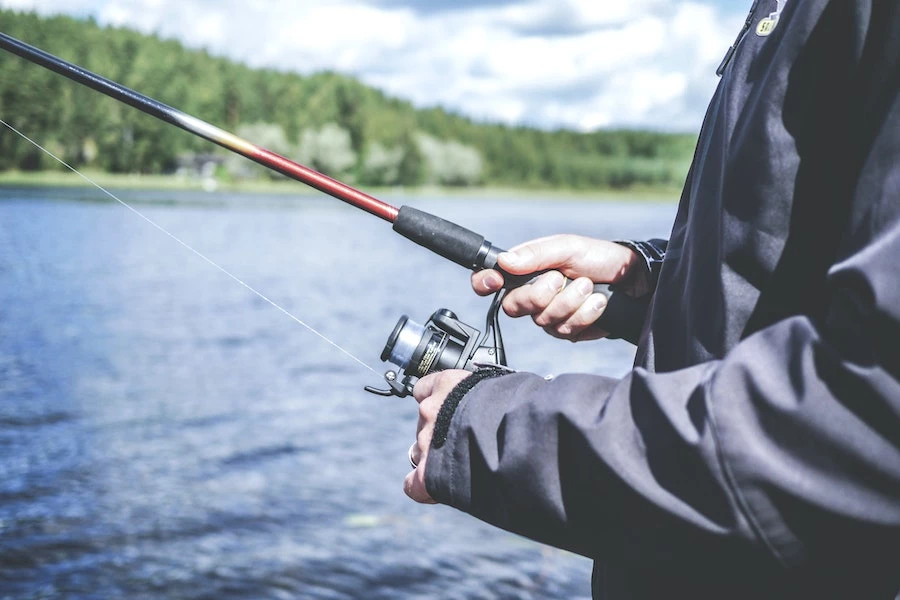
Fishing needs a lot of equipment to be successful. You need to pick the best fishing spot, season, and weather. However, these aren’t enough to catch a bass or crappie. You also need a reliable and complete set of fishing rods and tackle to succeed in fishing.
Suppose you’re planning to fish for the first time anytime soon. In that case, you may need to know more about fishing rods and tackle. It will help you catch fish quicker and cut costs in your fishing venture. For that purpose, here’s an article to guide you. So, read on!
Types Of Fishing Rod
The fishing rod is one of the essential tools in fishing. It serves as a lever that helps the angler adjust line movements as they lure and pull in the catch. While the feat of fishing also depends on power, distance, and precision, having the right fishing rod is half the battle of successful fishing.
To choose the best fishing rod based on your skills and experience, you may visit the best page or websites of fishing rods or tackles or dive into the following:
Casting
Casting rods are suitable for beginning anglers, especially if they’re using spin cast reels. These rods are more durable than spinning rods. In this option, the reel sits on top of the rod. Because of this type’s heavy lines, many seasoned anglers prefer this if they want to cast farther and plan to fish large species, such as bass.
Spinning
Spinning rods are some of the most common and can suit various fishing conditions. However, these types aren’t appropriate for catching larger species since they can hold heavy lines. The reel in this option sits below the rod compared to casting rods. These rods are also considered the most versatile since they can work on different lengths and species, excluding the large ones.
Trolling
If you’re looking for a rod to use behind a moving boat, trolling is the one for you. This type is usually mounted in a rod holder that can clasp multiple lines. In most cases, trolling rods can bend enough to catch heavy objects like rocks while being durable enough to avoid breakage.
Types Of Fishing Rods According To Material
Aside from the classification of fishing rods according to use and reels, they can also be grouped according to the material. Here are two of them:
Fiberglass
Generally, beginning anglers prefer fiberglass rods because they’re cheaper, lightweight, and flexible, which allows better drag. However, most of them offer lower power, minor sensitivity, and lower accuracy at more extended distances.
If you’re planning to fish in small and mid-sized streams, fiberglass rods could be the type you’re looking for. They’re flexible enough to work on untangling but rigid enough to lure and pull your catch. In addition, they’re also supple enough to prevent snapping.
Graphite
Graphite rods are modern fishing rods that can effectively catch large species. They can withstand extreme conditions because of their high flexibility. They can also provide better power and precision. However, they are generally expensive and may require a more advanced skillset to maneuver them.
How To Choose Fishing Reels
Aside from your fishing license, rod, and skills, you may need a proper fishing reel to make your fishing top-notch. In choosing a fishing reel, you need to determine first the fish you’re planning to catch or the lures and baits you’d use. For example, you may try spinning reels if you prefer lighter and smaller baits and lures. On the other hand, if you like heavy lures, you may need a baitcasting reel.
In addition, you may also consider the following weight classes of the reels if you’re using spinning types:
- 1000-3500: These are generally small and are appropriate for six-to-seven-foot rods, ideal for catching small species.
- 4000-5000: These sizes are considered medium-sized and are ideal for six-to-seven-foot monofilament rods for snappers and similar catches.
- 6000-9500: These are large types favoring boat and rock fishing.
- 10000-30000: These are extra-large types ideal for catching large fish, such as giant trevally.
How To Choose The Right Fishing Bait And Lure
In choosing the right bait for your rod and preferred catch, consider the following points:
Size And Color
Try to match the average size of your preferred catch to the bait or lure you’ll use. Larger baits can alarm the fish, while the possible catch can ignore smaller lures. In addition, your bait should be similar to the fish’s prey’s color.
Location
In choosing the location, you may consider muted-colored baits for lake fishing, while bright-colored lures are better for off-shore fishing. In addition, remember that freshwater fish generally go after artificial lures while saltwater types like live baits.
Weather
During overcast days, you may choose darker baits. On the other hand, you may want light-colored ones on sunny days. Apart from this, you may also check the location’s humidity, pressure, and temperature as these affect the types of fish that appear and your decision on what bait to use. This way, you can ensure that regardless of the weather conditions and water clarity, the fish can see them.
Wrapping Up
Suppose you’re planning to make the most of your fishing expedition. In that case, you may need to choose and use the perfect rod and tackle for your activity. For that purpose, here’s an article to guide you in picking what could help you bring home your first catch.








